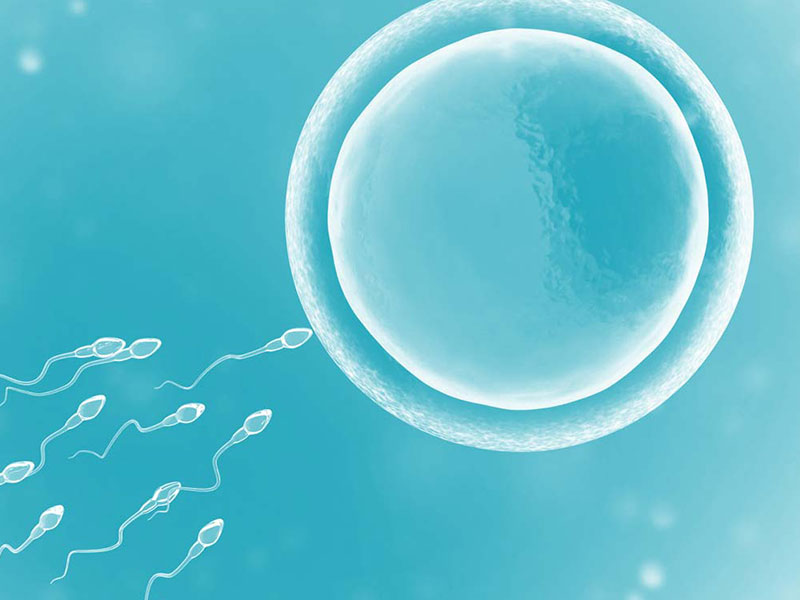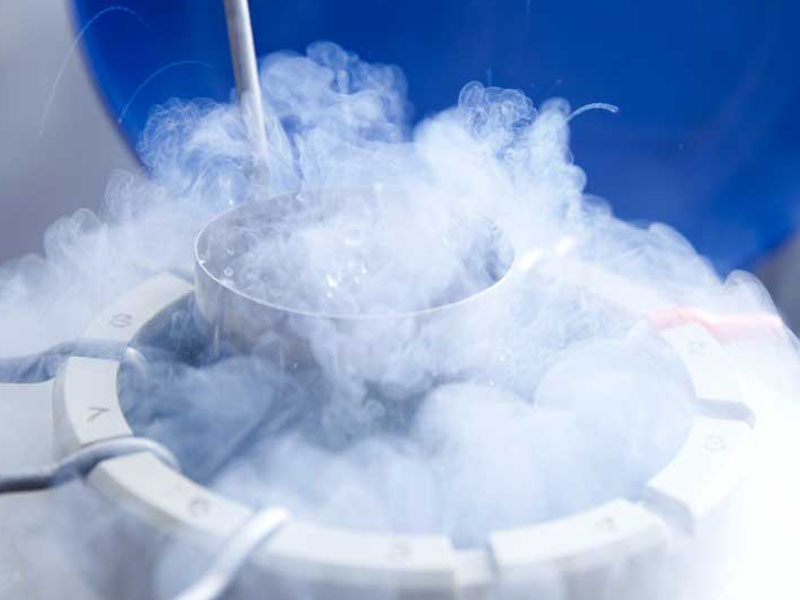- Home
- ICSI
IVF and ICSI Fertility Treatment
When we examine IVF treatments closely, we find another subtype known as ICSI. ICSI and IVF are both highly successful procedures, In each one has distinctive differences. When you partner with DHC IVF Center, you will have an in-depth discussion of your options with your trained expert, who can give you more details on whether traditional IVF or ICSI treatment is preferable in each case. They can also provide information on IVF and ICSI costs and answer questions about the procedures.
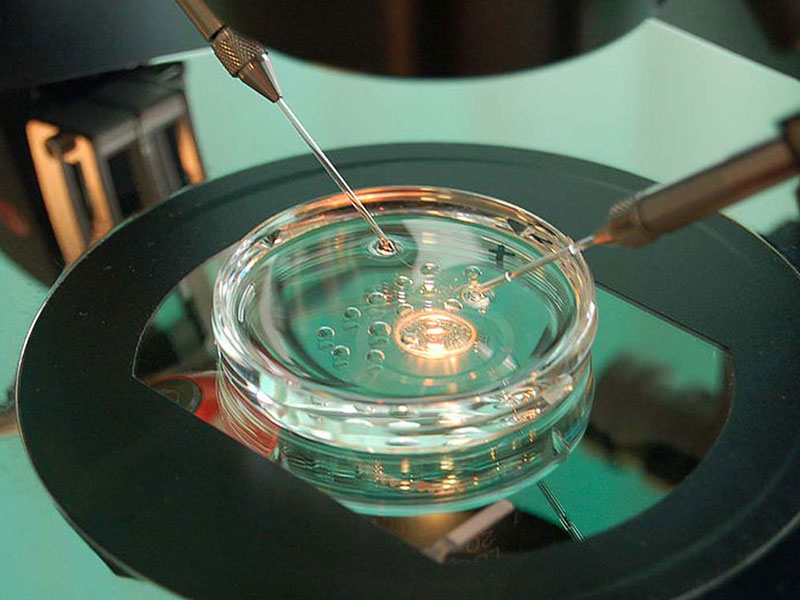
IVF treatment
When the traditional IVF fertility method is utilized, the sperm and egg are placed together outside the woman’s body, and it is hoped that the sperm will find its way to the egg and fertilize it. IVF (In-vitro Fertilization) is used primarily to address infertility problems that include:
- Blocked fallopian tubes—Also known as uterine tubes, oviducts, or salpinges, these tubes run from the ovaries to the uterus and are a critical part of the female reproductive system.
- Endometriosis—A chronic but benign disease that sees endometrial tissue growing outside the uterine cavity. It is relatively common, affecting an estimated 10-15% of adult women.
- Exceptional cases where IUI (Intrauterine Insemination) cycles have failed to produce the desired results.
ICSI treatment
In modern times ICSI is preferred in most cases. ICSI fertility treatment sees one healthy sperm chosen and injected directly into the egg as it remains in the woman’s body. These were successful using a sophisticated ICSI fertilization machine. ICSI treatment (Intracytoplasmic Sperm Injection) was used to address severe cases of male infertility, including:
- Oligozoospermia (Oligospermia)—A male pathology that diminishes sperm count.
- Asthenozoospermia—A condition that sees sperm lack motility, the ability to swim strongly in a straight line towards their target.
- Exceptional cases where traditional IVF techniques like IUI fail to secure a successful outcome.
IVF pregnancy vs ICSI pregnancy
Although IVF and ICSI treatment methods vary in practical terms, in both processes, the embryo is eventually transferred to the uterus. If all is well, it should then begin to grow normally. From this point onward, there are no discernible differences in the pregnancy itself.
IVF/ICSI
The difference between IVF and ICSI is how the sperm fertilizes the egg. In the IVF process, the egg and sperm are left in a laboratory dish for self-fertilization. In the ICSI process, the selected sperm is directly injection into the egg under the microscope.
ICSI gives satisfactory fertilization results and reduces problems with abnormal fertilization caused by eggs and sperm. There are the fertilization by multiple sperm and the inability of the sperm to penetrate the eggs and fertilize, etc.
The IVF/ICSI Process
Embryo Transfer procedure
The success rate of IVF/ICSI
In general, IVF/ICSI success rates are 50-70%. It depends on many factors :
- The female age
- The quality of egg and sperm
- The quality of embryo and embryo abnormality
- Endometrial thickness on the date of embryo transfer
- The abnormality of the uterus and endometrium
Recommended for
- Women with blocked or damaged fallopian tubes
- Women with ovulation disorders (PCOS)
- Women with endometriosis/Adenomyosis
- Individuals with a genetic disorder
- Male factor infertility included decreased sperm count or sperm motility
- Unexplained infertility.
Pros of IVF
- It’s the method with the highest chance of success nowadays.
- It can treat a variety of problems.
- It can be done even after a tubal ligation.
- It can be done even with low sperm motility.
- Genetic testing (NGS) of the embryo can be done.
Cons of ICSI
- Expenses more than IUI.
- There are more complicated steps.
- Be Takes several days.
In each case, there will be a few complications from egg retrieval, such as flatulence.
Contact us
To learn more about IVF and ICSI therapy, contact the team at DHC today. We will respond politely and informatively to any queries, and you can rely on our ultimate discretionary and professionalism every time.
Deep & Harmonicare IVF Center is a fertility center with JCI accreditation, the most advanced reproductive technology, and a high rate of success. We are prepared to provide help and guidance. Please feel free to contact us.
Website: https://dhcivfthai.com
Email: [email protected]
Facebook: Deep & Harmonicare IVF Center Global
YouTube: deep harmonicare
Instagram: @dhcivf.th
Line: @dhcivf.th
Deep & Harmonicare IVF Center
Testimonial ICSI
Success Case
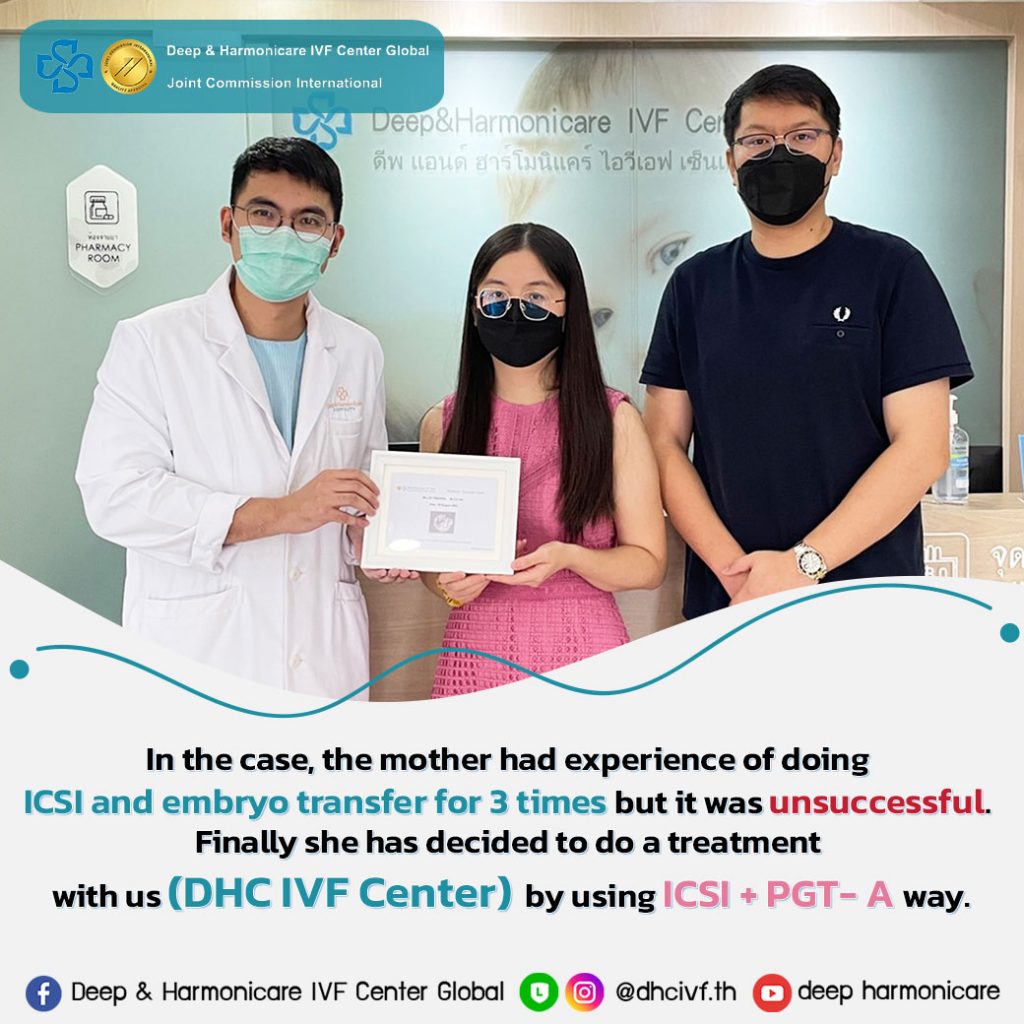
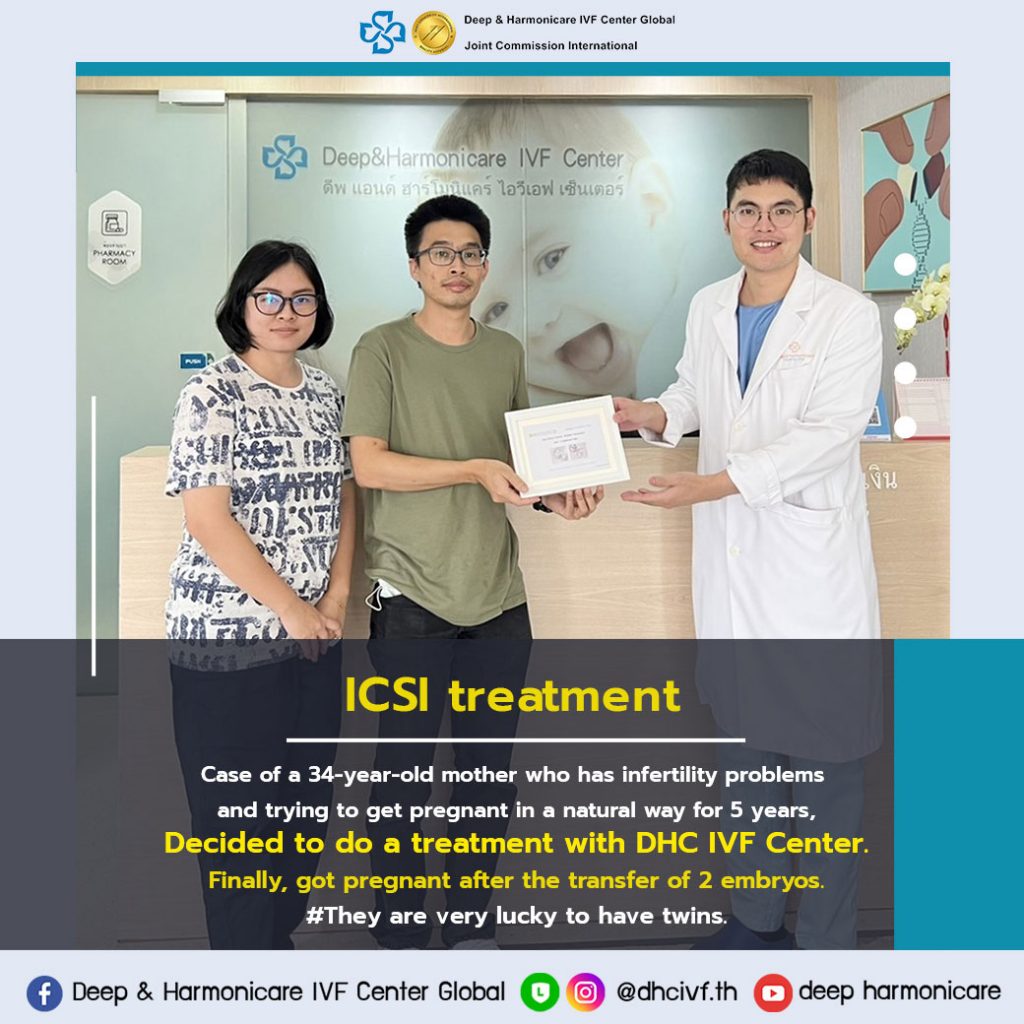
FAQ
A: IVF is generally a procedure for those who have had other methods of treatment that have not worked. However, people with certain medical conditions who cannot conceive may use IVF. They should consult their doctor for an assessment of their condition and a proper treatment plan.
A: For the best results, both men and women are required to undergo a medical examination before starting procedures such as blood tests to screen for diseases that are passed on to their children, semen analysis, and ultrasound examination to assess the female reproductive system.
A: The cost of IVF is not the same for each person. Depending on the dosage and medication used for ovarian stimulation, embryo culture, the cost of operating rooms used for egg retrieval and embryo transfer, and blood tests or ultrasounds to follow up at various stages IVF for one cycle may cost about 200,000–350,000 baht.
A: According to studies abroad, children born through assisted reproductive methods are no different from those born naturally.
A: Suitable for people who have had problems with infertility, have been married for many years, and have tried other treatments such as IUI many times but have not been pregnant. Couples older than 35 years, sterile men, less semen, weak sperm, women with uterine problems, narrowed fallopian tubes, and people with certain health problems, such as people with polycystic ovary syndrome (PCOS).
A: Usually, frozen embryo transfer has a greater chance of success than fresh embryo transfer because the patient can have time to prepare the uterus before the embryo transfer.
A: No effect because the cells taken for examination are the cells that will grow into the placenta and not the cells that will grow into the child.
A: 5-day embryo culture (blastocyst stage) to screen for embryos capable of naturally growing and dividing cells. And to be able to select the embryo that grows according to the criteria and is of good quality to be transferred back into the uterine cavity. The reason for not culturing the embryo for more than 5 days (6 days at most) is because after the 5th day, naturally, the embryo begins to implant in the uterine wall.

